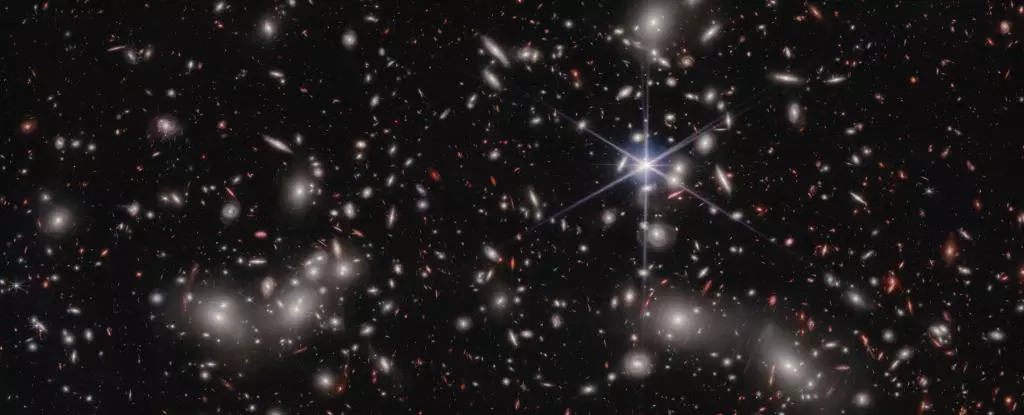The recent discovery of the crucial role played by small dwarf galaxies in the evolution of the early Universe has shed new light on the cosmic dawn. Research conducted using data from the Hubble and James Webb Space Telescopes has revealed that these ultra-faint galaxies were responsible for producing the ionizing photons that transformed neutral hydrogen into ionized plasma during cosmic reionization. According to astrophysicist Iryna Chemerynska of the Institut d’Astrophysique de Paris, understanding the significance of low-mass galaxies in shaping the Universe’s history is essential. This groundbreaking discovery has provided valuable insights into the process that brought light to the dark and formless void of the early cosmos.
In the initial stages of the Universe, shortly after the Big Bang, a hot and dense fog of ionized plasma filled the space. At this point, the Universe was dark, as photons were unable to penetrate the fog and would simply scatter off the free electrons present in the environment. As the Universe cooled down after approximately 300,000 years, protons and electrons combined to form neutral hydrogen and helium gas. The first stars were born out of this gas, emitting radiation that was strong enough to reionize the surrounding medium by stripping electrons away from their nuclei. This reionization process marked the end of the cosmic dawn, bringing light to the Universe around 1 billion years after the Big Bang. Despite the expansion of the Universe, the diffuse gas allowed light to shine through, illuminating the cosmos.
While scientists previously believed that massive sources such as black holes and large galaxies were primarily responsible for the reionization process, recent observations from the James Webb Space Telescope suggest otherwise. An international team led by astrophysicist Hakim Atek of the Institut d’Astrophysique de Paris focused on galaxy cluster Abell 2744, using data from both JWST and Hubble to examine tiny dwarf galaxies near the cosmic dawn. Surprisingly, these dwarf galaxies were found to be the most abundant galaxy type in the early Universe and emitted more ionizing radiation than larger galaxies. Their collective output was four times greater than what was previously assumed for larger galaxies, indicating that these low-mass galaxies played a significant role in reionizing the Universe.
Future Directions and Implications
While the discovery of the importance of dwarf galaxies in reionization is a significant breakthrough, further research is needed to validate these findings. The researchers plan to investigate additional cosmic lens regions to obtain a broader sample of early galactic populations and ensure the representativeness of their results. This step is crucial in confirming whether dwarf galaxies were indeed the key players in the reionization process during the cosmic dawn. The implications of this research are profound, as it provides an unprecedented glimpse into the transformative impact of low-mass galaxies on the entire state of the Universe.
The newfound understanding of the role of dwarf galaxies in illuminating the dark cosmic dawn represents a pivotal moment in astrophysical research. With the aid of advanced telescopes and sophisticated data analysis techniques, scientists are unraveling the mysteries of the early Universe and gaining insights into the processes that shaped the cosmos as we know it today. The ongoing exploration of the cosmic dawn promises to reveal even more about the origins of light and the forces that drove the evolution of the Universe.


Leave a Reply